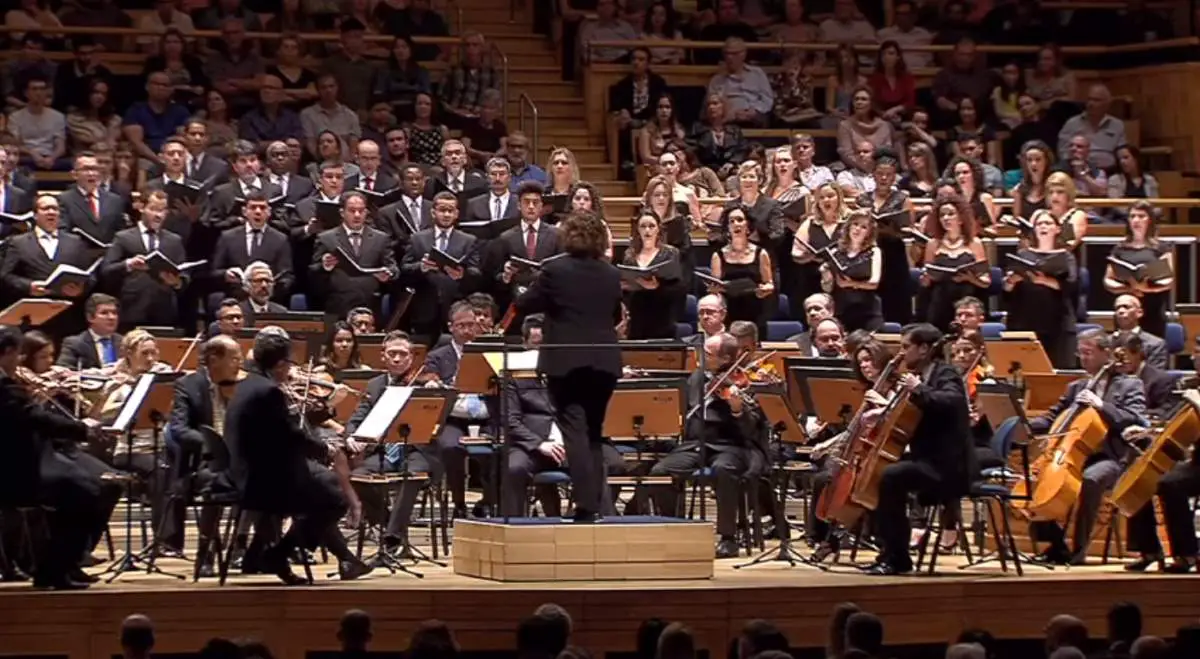Conducted by John Eliot Gardiner, the Royal Stockholm Philharmonic Orchestra & Monteverdi Choir perform Wolfgang Amadeus Mozart’s Great Mass in C minor, K. 427/417a. Recorded during the Nobel Prize Concert, 2008.
Miah Persson soprano, Ann Hallenberg mezzo-soprano, Helge Rønning tenor, Peter Mattei bass
Nobel Prize Concert 2008
Mozart’s Great Mass: The Structure
Mozart’s Great Mass is incomplete, missing the Credo movements following the aria Et incarnatus est (the orchestration of the only two surviving Credo movements being incomplete) and all of the Agnus Dei. The Sanctus and the Benedictus are partially lost and require editorial reconstructions.
Kyrie:
- Kyrie: chorus and soprano
Gloria:
- Gloria in excelsis Deo: chorus
- Laudamus te: soprano
- Gratias agimus tibi; chorus
- Domine Deus: sopranos I and II
- Qui tollis: double choir
- Quoniam tu solus: sopranos I and II
- Jesu Christe: chorus
- C. Sancto Spiritu: chorus
Credo:
- Credo in unum Deum: chorus
- Et incarnatus est: soprano I
Sanctus:
- Sanctus: double choir
- Benedictus qui venit: quartet and double chorus
Soloists
- Miah Persson: soprano
- Ann Hallenberg: alto
- Helge Rønning: tenor
- Peter Mattei: bass
Royal Stockholm Philharmonic Orchestra & Monteverdi Choir
Conducted by John Eliot Gardiner
Great Mass in C minor (German: Große Messe in c-Moll), K. 427/417a, is the common name of the last musical setting of the mass by Wolfgang Amadeus Mozart. He composed it in Vienna in 1782 and 1783, when he was no longer a church musician of the Salzburg Cathedral.
The first performance took place in Salzburg on Sunday 26 October 1783 (the twentieth Sunday after Pentecost). Mozart had moved to Vienna in 1781 but was paying a visit to his hometown in the company of Constanze, who had not yet met his father or his sister (Nannerl).
Sources
- Great Mass in C minor, K. 427 on Wikipedia


excellent the choir,and generally the whole interpretation of the great mass
Thanks for watching, Georgia!
Beautyfull song like to be part of a show.
Thanks for watching, Margarita! Yes, it is so beautiful.